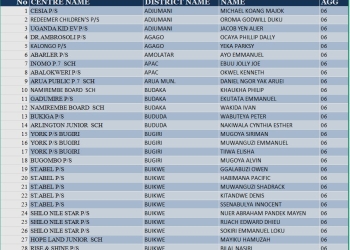
It used to be difficult to get into numerous kindergartens throughout China. But now, classrooms originally designed for 30 children hold scarcely half that number. Meanwhile, newly opened pet grooming salons are booked solidly for weeks, offering services ranging from basic trims to elaborate spa treatments for the neighborhood’s pampered pooches.
This scene is playing out across China, where the nation faces a demographic crisis that continues to deepen. For the third consecutive year, China’s population has declined. It dropped by 1.39 million in 2024 to 1.4083 billion. While the birth rate showed a modest increase from 6.39 births per 1,000 people in 2023 to 6.77 in 2024, deaths still outnumbered births. In 2024, 10.93 million people died, pushing the death rate to a five-decade high.
The slight uptick in births — 9.54 million babies in 2024 compared to 9.02 million in 2023 — offers little comfort to policymakers. That 2023 figure represented the lowest number of newborns since recordkeeping began in 1949. The modest recovery in 2024 is attributed partly to the Year of the Dragon, traditionally considered an auspicious time for childbirth in Chinese culture.
Yet amid this birth drought, another trend is flourishing: young Chinese are increasingly channelling their parental instincts toward pets, creating a booming industry catering to “fur babies.” Some even lavish generously on luxury products and services once exclusively reserved for humans.
This shift raises profound questions about China’s future: Is money really the main obstacle to having children? Or are deeper cultural and lifestyle changes reshaping what family means in modern China?
Government Tries Incentives
In some cities, local governments are implementing increasingly generous subsidies to encourage childbearing. For instance, the city of Hohhot in Inner Mongolia has recently launched what might be China’s most aggressive birth incentive program yet. Starting March 1, 2025, parents in this northern city of 3.6 million will receive substantial cash rewards for having children.
The city offers a one-time payment of 10,000 yuan ($1,394) for a first child, annual payments of 10,000 yuan for five years for a second child (totaling 50,000 yuan), and annual payments of 10,000 yuan for ten years for a third child (totaling 100,000 yuan). The urgency is clear: Hohhot’s birth rate stood at just 5.58 births per 1,000 people in 2023, below the national average of 6.39.
Hohhot’s program represents a significant escalation in China’s efforts to reverse its demographic decline. Since abandoning the one-child policy in 2015 and further loosening restrictions to allow three children per family in 2021, the government has shifted from limiting births to actively encouraging them. But will throwing money at the problem work?
Wealth Doesn’t Lead to Larger Families
When it comes to having children in China, a counterintuitive pattern manifests. The wealthier regions do not necessarily see more childbirths. This demographic paradox poses a challenge to the conventional wisdom that financial stability leads to larger families.
For instance, in 2022, Shanghai — China’s financial powerhouse — recorded just 4.35 births per 1,000 residents. Meanwhile, remote Tibet registered 14.24, more than three times higher. Other wealthy regions like Jiangsu (5.23) and Beijing (5.67) similarly lag far behind less developed provinces like Guizhou (11.03) and Ningxia (10.6).
The economy is not the sole factor either. For instance, Guangzhou, another relatively economically affluent province in China, ranked high in the nationwide birth rate with 8.3 births per 1,000 residents. That phenomenon is largely attributed to the cultural and traditional belief that having large families is a sign of prosperity in the region.
Furry Substitutes for Children
However, on the other end of the spectrum, numerous young Chinese are treating pets as if they were their babies. “People are very willing to spend money on pets, especially Shanghai residents,” says Zang Shuo. She is a fashion design graduate who pivoted from human couture to pet clothing. Her business offers custom-designed pet outfits ranging from 200-400 yuan ($27-55) each, with some clients ordering new clothes monthly.
“They basically all take their pets out in little strollers, and every season they travel with their dogs. There are almost no ‘naked dogs’ here — they all wear clothes.”
Although the price range of 200-400 yuan exceeds that of many children’s clothing (not to forget that the one-time subsidy for the first birth in Hohohot is 10,000 yuan), pet owners do not hesitate at such a price.
The trend extends beyond basic necessities to luxury items and services. Pet owners request Burberry-style coats and Gucci-inspired accessories. They book pet spa treatments, professional photoshoots, and even pet summer camps. Some pets have their own social media accounts with thousands of followers.
Such scenes, once rare, are now increasingly common in China’s urban centers. As birth rates plummet, a parallel trend is emerging: young Chinese are channelling parental instincts and disposable income toward pets, treating them with a devotion once reserved for children.
Changing Values
This shift in spending priorities raises profound questions about changing values in Chinese society. As young people increasingly refer to themselves as “dog parents” and “cat parents,” they’re redefining what family means in contemporary China. Different from the parents’ generation, where starting a family was a must, for modern China’s generation, family formation is increasingly a choice rather than an expectation.
The rise of pet parenting speaks to changing emotional needs in a fast-paced, often isolating urban environment. Pets provide unconditional affection, without the decades-long commitment and societal expectations that come with raising children. They allow young people to nurture and care for another being without fundamentally altering their lifestyle or identity.
And this is especially true for women. As regions become wealthier, education levels rise, women gain more career opportunities, and traditional family structures evolve. The cost of raising children in these areas also increases dramatically, not just financially, but in terms of time, career sacrifices, and lifestyle changes.
Strong Grip of the One-Child Policy
In more affluent cities and provinces in China, society often expects parents to invest enormous resources in each child to ensure their success. Many parents feel pressured to provide the best education, extracurricular activities, and social resources. This is the so-called “quality over quantity” mindset that was first promoted during the one-child policy. Now it has become common in provinces like Jiangsu, Zhejiang, and first-tier cities, even after the one-child policy became history.
However, with a pet, one can still travel, focus on a career, and maintain independence. Social media amplifies these trends, making pet ownership a lifestyle statement and identity marker in a way that parenthood, once taken for granted, no longer is.
So, could China’s new birth subsidies work? For regions like Hohhot, where 10,000 yuan represents a meaningful percentage of annual income, financial incentives may indeed move the needle. However, the stark regional disparities in birth rates reveal a more complex picture. It is one where China’s demographic future will be shaped not just by economic policies but by cultural transformations.
The path ahead might entail not merely subsidies, but a more extensive rethinking of what family, fulfilment, and social aspects signify for a generation trapped between tradition and transformation. For example, how can work settings in China’s Party-State mechanism offer better support to parents? Can childcare duties be shared more fairly? And how can communities furnish the emotional backing that once came from extended families to parents born under the notorious one-child policy?

















